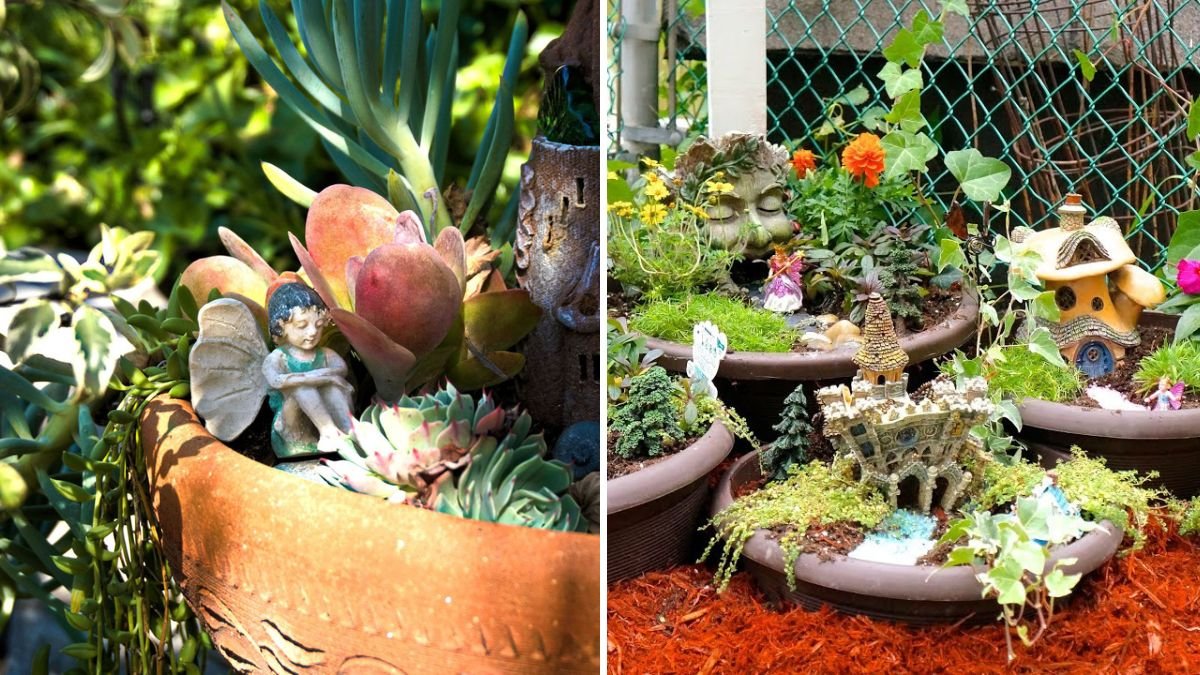Fairy gardens are enchanting miniature landscapes that bring whimsy, creativity, and charm to any indoor or outdoor space. By combining tiny plants, scaled-down accessories, and imaginative design, you can create a magical garden that captivates both children and adults. Beyond their aesthetic appeal, fairy gardens are also a therapeutic and rewarding gardening project, allowing you to explore creativity on a small scale while nurturing plants.
This guide explores how to create a fairy garden using miniature plants, offering detailed insights on plant selection, design principles, care tips, and creative enhancements to make your miniature world come alive.
1. Understanding the Concept of a Fairy Garden
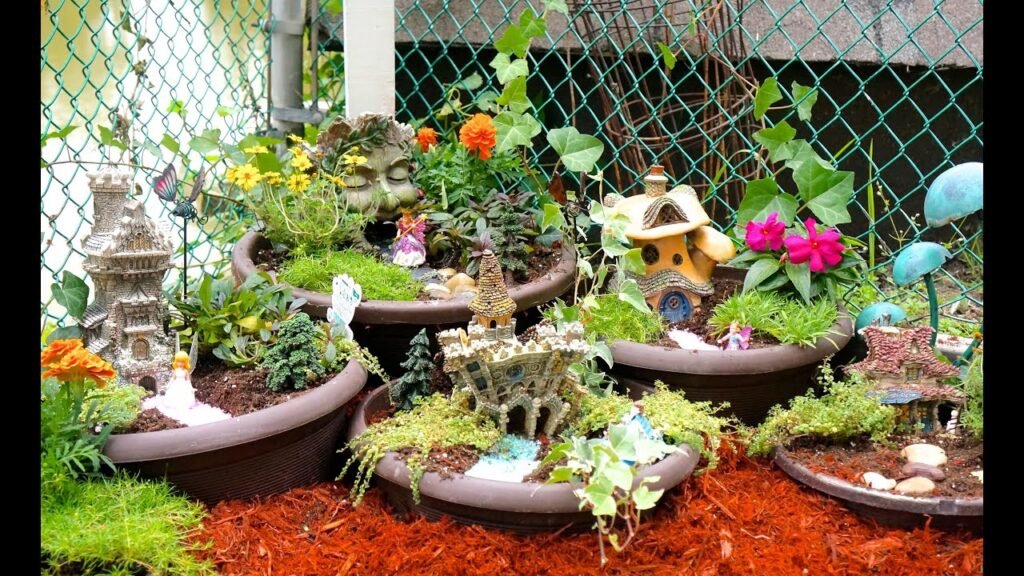
A fairy garden is essentially a small-scale landscape designed to mimic a magical outdoor environment. Traditionally, these gardens feature:
- Tiny plants and mosses for ground cover.
- Miniature structures such as houses, bridges, or benches.
- Decorative elements like pebbles, fairy figurines, and fairy lights.
Fairy gardens combine horticultural knowledge with artistic expression, making them both functional and whimsical. They can be placed in:
- Containers or terrariums indoors.
- Raised beds or garden corners outdoors.
- Window boxes or patios for limited spaces.
The small scale allows gardeners to experiment creatively without needing a large yard or extensive gardening expertise.
2. Choosing the Right Container
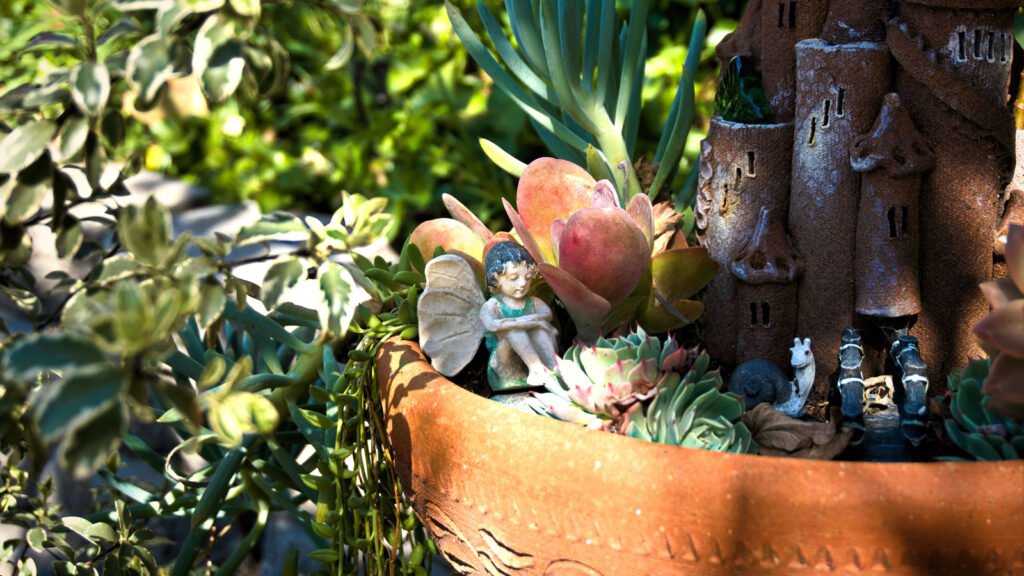
The container sets the stage for your fairy garden. Choosing the right one depends on size, style, and location:
a. Indoor Containers
- Terrariums, glass bowls, or shallow planters.
- Transparent containers allow for better visibility and add a mystical feel.
b. Outdoor Containers
- Wooden boxes, ceramic pots, or old troughs.
- Ensure proper drainage to prevent waterlogging.
c. Creative Options
- Repurposed teacups, birdcages, or old boots for a whimsical touch.
- Small containers encourage compact plant growth suitable for miniature landscapes.
A suitable container ensures plant health and design flexibility.
3. Selecting Miniature Plants
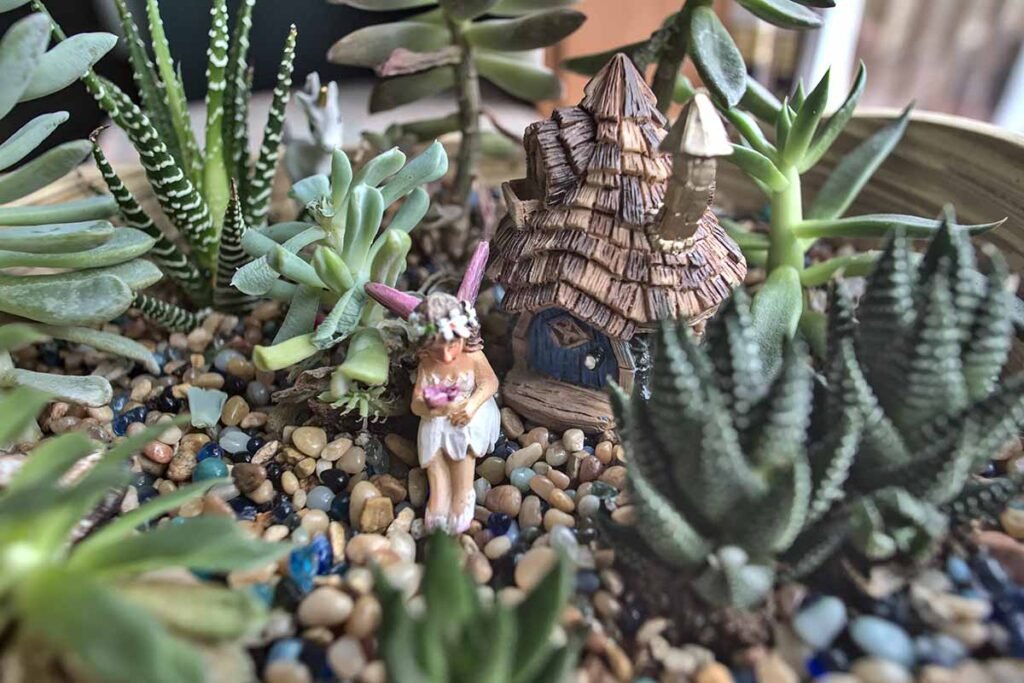
Choosing the right plants is crucial for a successful fairy garden. Look for slow-growing, small-scale, and visually appealing plants.
a. Common Indoor Miniature Plants
- Miniature ferns: Provide a forest-like texture.
- Mosses: Ideal for ground cover and creating a lush look.
- Miniature succulents: Low maintenance, ideal for terrariums.
- Baby Tears (Soleirolia soleirolii): Creates a soft, carpet-like surface.
b. Outdoor Miniature Plants
- Dwarf conifers: Add height and structure.
- Miniature hostas or heuchera: Provide leaves in various colors.
- Miniature flowering plants: Tiny pansies, alyssum, or lobelia.
c. Herbs in Fairy Gardens
- Thyme, oregano, or rosemary: Low-growing herbs add fragrance and texture.
d. Plant Selection Tips
- Choose plants with similar light and water requirements.
- Opt for slow-growing varieties to maintain scale.
- Include a mix of textures, colors, and heights to create depth.
Miniature plants are essential for creating a believable and enchanting landscape.
4. Designing the Layout
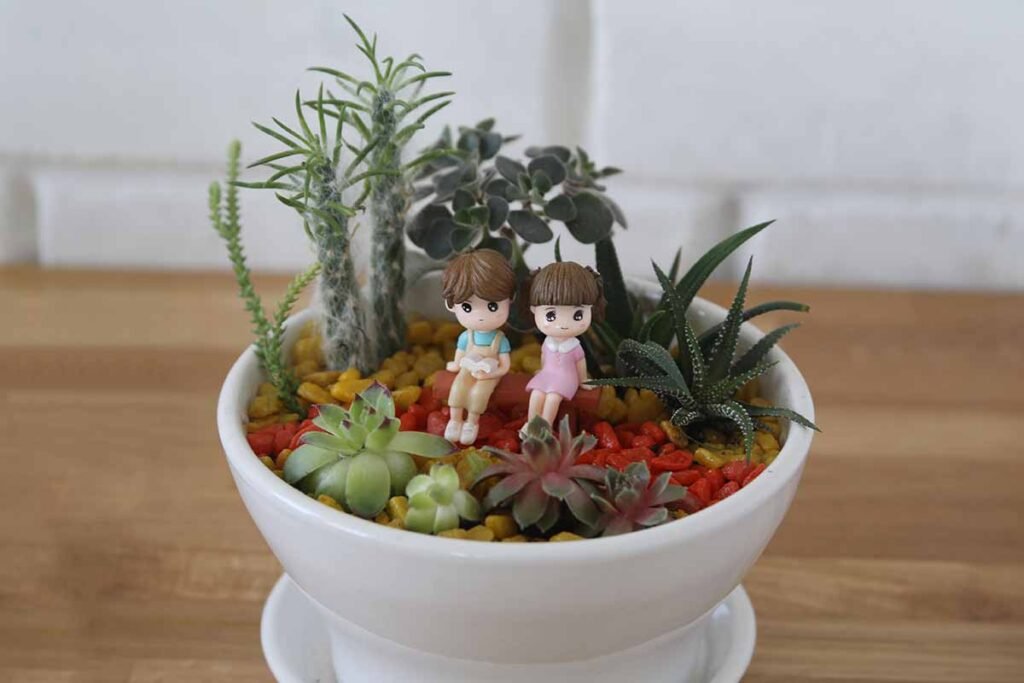
A compelling fairy garden requires thoughtful design and spatial planning:
a. Plan the Scene
- Decide on a theme: woodland, cottage, pond-side, or whimsical fantasy.
- Sketch a rough layout for plant placement and accessory locations.
b. Layering
- Place taller plants at the back or center to create perspective.
- Ground cover plants and mosses in front simulate grass or pathways.
- Use stones or small gravel to define paths and sections.
c. Miniature Structures
- Add tiny houses, benches, bridges, or fences to bring the garden to life.
- Use natural materials like bark, twigs, and pebbles for a realistic look.
d. Accessories and Details
- Fairy figurines, miniature animals, and tiny lanterns add character and storytelling elements.
- Tiny water features like pebble ponds or glass “streams” create movement and visual interest.
Thoughtful layout and layering enhance the magical illusion of your fairy garden.
5. Planting Your Fairy Garden
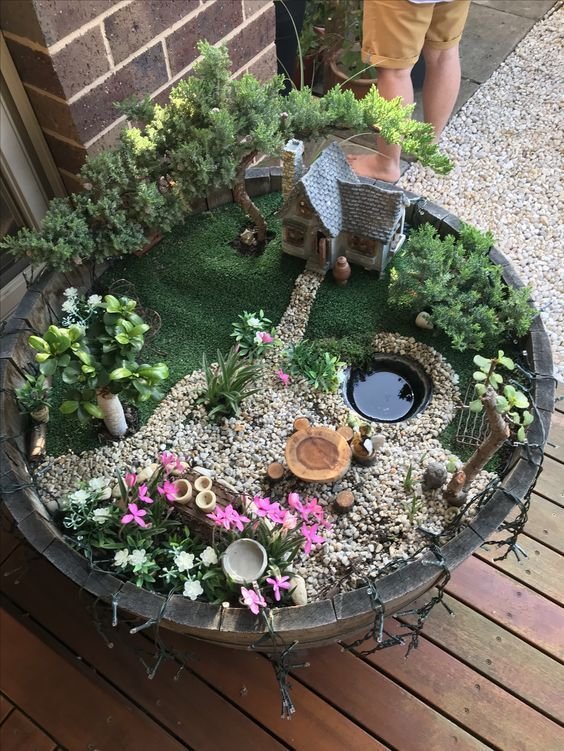
Once the design is ready, the planting process begins:
Step 1: Prepare the Soil
- Use a well-draining potting mix for container gardens.
- Add a layer of sand or gravel at the bottom for drainage.
Step 2: Position Plants
- Start with the largest or tallest plants first.
- Arrange ground cover and smaller plants around them.
- Ensure each plant has sufficient space to grow without overtaking accessories.
Step 3: Add Miniature Features
- Place houses, bridges, and figurines carefully.
- Secure lightweight items with garden adhesive or stakes if outdoors.
Step 4: Mulch and Finishing Touches
- Use moss, sand, or small pebbles to cover exposed soil and create pathways.
- Add small decorative elements like glass gems, shells, or tiny fairy lights.
Planting and accessorizing with attention to detail ensures a cohesive and enchanting miniature landscape.
6. Care and Maintenance
Miniature plants require specific care to thrive in a fairy garden setting:
a. Watering
- Keep soil evenly moist but not soggy.
- Container gardens dry out faster than in-ground gardens.
b. Light
- Indoor gardens: Bright, indirect sunlight or fluorescent grow lights.
- Outdoor gardens: Partial sun or shade depending on plant selection.
c. Pruning and Trimming
- Trim overgrown plants to maintain scale.
- Remove dead leaves and faded flowers to preserve aesthetics.
d. Fertilizing
- Use diluted liquid fertilizer every 4–6 weeks for indoor plants.
- Apply slow-release fertilizer for outdoor fairy gardens during growing season.
Regular care ensures vibrant, healthy plants and a magical appearance year-round.
7. Creative Enhancements
To elevate your fairy garden, consider adding interactive and whimsical elements:
- Lighting: Tiny solar or battery-operated fairy lights.
- Paths: Pebbles, sand, or miniature stepping stones.
- Water Features: Pebble ponds, small mirrors as ponds, or miniature fountains.
- Seasonal Decor: Mini pumpkins for fall, tiny snow decorations for winter.
These enhancements bring the garden to life, making it a delightful focal point for any space.
8. Benefits of Creating a Fairy Garden
Fairy gardens offer more than visual appeal:
- Encourages Creativity: Designing miniature landscapes is an imaginative process.
- Therapeutic Activity: Gardening reduces stress and enhances mindfulness.
- Educational Value: Teaches children about plant growth, ecosystems, and responsibility.
- Compact Gardening Solution: Ideal for apartments, balconies, or limited spaces.
- Conversation Starter: Adds charm and personality to your home or garden.
Creating a fairy garden combines horticulture, art, and storytelling, providing both enjoyment and educational benefits.
9. Common Challenges and Solutions
a. Overgrown Plants
- Solution: Regular pruning to maintain scale and design.
b. Pest Problems
- Solution: Use natural pest control such as neem oil or hand-picking pests.
c. Drying Out in Containers
- Solution: Use self-watering containers or water-retaining soil mixes.
d. Indoor Lighting Issues
- Solution: Supplement with LED grow lights for consistent growth.
Anticipating challenges ensures healthy, thriving fairy gardens with minimal frustration.
10. Conclusion: Bringing Magic to Your Space
Creating a fairy garden using miniature plants is an enchanting way to express creativity, connect with nature, and add charm to your living spaces. By carefully selecting small-scale plants, designing a thoughtful layout, and incorporating miniature accessories, you can craft a magical world that delights both the young and young-at-heart.
Fairy gardens are more than decorative projects—they provide therapeutic benefits, foster imagination, and teach sustainable gardening principles. Whether displayed indoors on a windowsill or outdoors in a shaded corner, these miniature landscapes offer a lasting sense of wonder and beauty.
By following these steps and maintaining your miniature plants with care, you can enjoy a magical fairy garden that thrives and enchants for years, creating a whimsical retreat in the heart of your home or garden.
